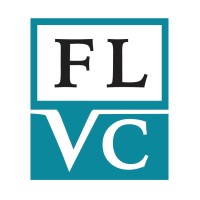
Florida Virtual Campus Company Cyber Security Posture
flvc.orgFlorida Virtual Campus (FLVC) provides critical educational support services utilized by all public postsecondary institutions within the Florida College System (FCS), State University System (SUS), along with Florida’s K-12 school districts. FLVC provides free programs and resources to help students go to college, succeed in school, and prepare for career success after graduation. Key among those services are the centralized, automated library system used by Florida’s 40 public colleges and universities, support services for statewide higher education distance learning, automated tools for college/career planning, and online transfer options for students. FLVC’s centralized, shared-services model continues to return significant dividends for the state of Florida in the form of greater efficiency, value generation, cost savings, and optimization of college/university staff, capital, and time. The Florida Virtual Campus is currently administered by the Northwest Regional Data Center at Florida State University.
FVC Company Details
floridavirtualcampus
50 employees
725.0
none
Education Management
flvc.org
Scan still pending
FLO_1667067
In-progress
Between 200 and 800
This score is AI-generated and less favored by cyber insurers, who prefer the TPRM score.
 FVC Global Score
FVC Global Score.png)

Florida Virtual Campus Company Scoring based on AI Models
| Model Name | Date | Description | Current Score Difference | Score |
|---|---|---|---|---|
| AVERAGE-Industry | 03-12-2025 | This score represents the average cybersecurity rating of companies already scanned within the same industry. It provides a benchmark to compare an individual company's security posture against its industry peers. | N/A | Between 200 and 800 |
Florida Virtual Campus Company Cyber Security News & History
| Entity | Type | Severity | Impact | Seen | Url ID | Details | View |
|---|---|---|---|---|---|---|---|
| Florida Virtual Campus | Breach | 100 | 5 | 03/2018 | FLO20509622 | Link | |
Rankiteo Explanation : Attack threatening the organization’s existenceDescription: More than 50,000 Leon County Schools students and teachers have had their sensitive information compromised in a major data breach involving Florida Virtual School. Superintendent Rocky Hanna blasted Florida Virtual School for its failure to secure the data and its handling of the breach and said Florida Virtual School left its server wide open for intruders to access. Florida Virtual School acknowledged the breach and stated more than 350,000 students, teachers and parents could be affected. The school contacted the district, the Florida Department of Law Enforcement, and the FBI after learning of the breach. The Florida Virtual School is offering a year of free credit reporting to potentially impacted students. | |||||||
Florida Virtual Campus Company Subsidiaries

Florida Virtual Campus (FLVC) provides critical educational support services utilized by all public postsecondary institutions within the Florida College System (FCS), State University System (SUS), along with Florida’s K-12 school districts. FLVC provides free programs and resources to help students go to college, succeed in school, and prepare for career success after graduation. Key among those services are the centralized, automated library system used by Florida’s 40 public colleges and universities, support services for statewide higher education distance learning, automated tools for college/career planning, and online transfer options for students. FLVC’s centralized, shared-services model continues to return significant dividends for the state of Florida in the form of greater efficiency, value generation, cost savings, and optimization of college/university staff, capital, and time. The Florida Virtual Campus is currently administered by the Northwest Regional Data Center at Florida State University.
Access Data Using Our API

Get company history
.png)
FVC Cyber Security News
Bellini College of Artificial Intelligence, Cybersecurity and Computing will foster USF-wide collaborations
The Bellini College will produce job-ready professionals in the fields of artificial intelligence, cybersecurity and computing. It will also ...
AI and Cybersecurity Impact on Healthcare is Subject of Free, Virtual SF Summit March 14
Topics include AI Leadership Implementation Strategies, Cybersecurity Implementation Strategies, Future Workforce Skills and Education Programs ...
Cyber Bowl kicks off: FSU battles rivals for cybersecurity supremacy
Florida State University's Information Technology Services department is kicking off its annual challenge to bring awareness and education to ...
AI’s Impact on College Cybersecurity
Artificial intelligence is no longer a niche tech subject. It's on campuses everywhere, and there's no putting the genie back in the bottle.
Cybercrime Diary, Vol. 3, No. 1: Who’s Hacked? Latest Data Breaches And Cyberattacks
Although Facebook has dominated the cybersecurity media headlines over the past few weeks, and the hacks on major brands before that, ...
Exploring Cybersecurity Careers in Florida: Why an Online Cybersecurity Degree is the Key to Success
Pursuing an online cybersecurity degree in Florida is an excellent option. It offers flexibility, convenience, and access to a high-quality education.
USF is helping bring AI to Pre-K-12 classrooms
To prepare students for an AI-driven world, USF is helping teachers in Tampa Bay and across the country integrate AI into their classrooms.
Problems including access to porn called ‘growing pains’ for juvenile justice school
Problems including access to porn called 'growing pains' for juvenile justice school · Department claims it curbed access to porn but has not ...
Best Online Bachelor’s Degrees In Cybersecurity Of 2024
Editorial Note: We earn a commission from partner links on Forbes Advisor. Commissions do not affect our editors' opinions or evaluations.

FVC Similar Companies

Gayatri Vidya Parishad
Gayatri VidyaParishad Society was founded by eminent educationists, academicians, industrialists and those with a touch of human values to empower the young generation with a high quality technical education. The main objective of the society is to impart quality education as well facilitate value b

National Chung Cheng University
This is one of the famous and top-ranked university in South of Taiwan, Republic of China. It has 7 colleges and several departments such as Computer Science and Information Engineering, Electrical Engineering, Foreign Language, Mathematics, etc. It has a faculty of more than 500 professors. The num

Russian State University for the Humanities
The Russian State University for the Humanities is an educational institution which trains specialists in all areas of knowledge in the humanities. Drawing upon more than three hundred years of the Russian higher education tradition, as well as upon the experience (and example) of the two unique Rus

Egitim Bilisim Agi
Eğitim-öğretim sürecinde bilişim teknolojisi donanımlarını kullanarak etkin materyaller kullanmanız amacıyla Yenilik ve Eğitim Teknolojileri Genel Müdürlüğü tarafından tasarlanan Eğitim Bilişim Ağı (EBA) sınıf seviyelerine uygun, güvenilir ve incelemeden geçmiş doğru e-içerikleri bulabileceğiniz sos

National University of Science and Technology
National University of Sciences and Technology (NUST) is a premier national institution that has won global acclaim within a short span of time. Various constituent schools and colleges functioning under the umbrella of NUST are imparting high quality education at both undergraduate and postgraduate

Secretaria de Educação do Estado de Pernambuco
For 52 years, the Department of Education of Pernambuco was linked to the health department of the State. The disconnect between the two bodies and the consequent acquisition of autonomy of the SE came through Law 466, on 22 April 1949, during the administration of then Governor Alexandre José Barbo

Frequently Asked Questions (FAQ) on Cybersecurity Incidents
FVC CyberSecurity History Information
Total Incidents: According to Rankiteo, FVC has faced 1 incidents in the past.
Incident Types: The types of cybersecurity incidents that have occurred include ['Breach'].
Total Financial Loss: The total financial loss from these incidents is estimated to be {total_financial_loss}.
Cybersecurity Posture: The company's overall cybersecurity posture is described as Florida Virtual Campus (FLVC) provides critical educational support services utilized by all public postsecondary institutions within the Florida College System (FCS), State University System (SUS), along with Florida’s K-12 school districts. FLVC provides free programs and resources to help students go to college, succeed in school, and prepare for career success after graduation. Key among those services are the centralized, automated library system used by Florida’s 40 public colleges and universities, support services for statewide higher education distance learning, automated tools for college/career planning, and online transfer options for students. FLVC’s centralized, shared-services model continues to return significant dividends for the state of Florida in the form of greater efficiency, value generation, cost savings, and optimization of college/university staff, capital, and time. The Florida Virtual Campus is currently administered by the Northwest Regional Data Center at Florida State University..
Detection and Response: The company detects and responds to cybersecurity incidents through {description_of_detection_and_response_process}.
Incident Details
Incident 1: Ransomware Attack
Title: {Incident_Title}
Description: {Brief_description_of_the_incident}
Date Detected: {Detection_Date}
Date Publicly Disclosed: {Disclosure_Date}
Date Resolved: {Resolution_Date}
Type: {Type_of_Attack}
Attack Vector: {Attack_Vector}
Vulnerability Exploited: {Vulnerability}
Threat Actor: {Threat_Actor}
Motivation: {Motivation}
Incident 2: Data Breach
Title: {Incident_Title}
Description: {Brief_description_of_the_incident}
Date Detected: {Detection_Date}
Date Publicly Disclosed: {Disclosure_Date}
Date Resolved: {Resolution_Date}
Type: {Type_of_Attack}
Attack Vector: {Attack_Vector}
Vulnerability Exploited: {Vulnerability}
Threat Actor: {Threat_Actor}
Motivation: {Motivation}
Common Attack Types: As of now, the company has not encountered any reported incidents involving common cyberattacks.
Identification of Attack Vectors: The company identifies the attack vectors used in incidents through {description_of_identification_process}.
Impact of the Incidents
Incident 1: Ransomware Attack
Financial Loss: {Financial_Loss}
Data Compromised: {Data_Compromised}
Systems Affected: {Systems_Affected}
Downtime: {Downtime}
Operational Impact: {Operational_Impact}
Conversion Rate Impact: {Conversion_Rate_Impact}
Revenue Loss: {Revenue_Loss}
Customer Complaints: {Customer_Complaints}
Brand Reputation Impact: {Brand_Reputation_Impact}
Legal Liabilities: {Legal_Liabilities}
Identity Theft Risk: {Identity_Theft_Risk}
Payment Information Risk: {Payment_Information_Risk}
Incident 2: Data Breach
Financial Loss: {Financial_Loss}
Data Compromised: {Data_Compromised}
Systems Affected: {Systems_Affected}
Downtime: {Downtime}
Operational Impact: {Operational_Impact}
Conversion Rate Impact: {Conversion_Rate_Impact}
Revenue Loss: {Revenue_Loss}
Customer Complaints: {Customer_Complaints}
Brand Reputation Impact: {Brand_Reputation_Impact}
Legal Liabilities: {Legal_Liabilities}
Identity Theft Risk: {Identity_Theft_Risk}
Payment Information Risk: {Payment_Information_Risk}
Average Financial Loss: The average financial loss per incident is {average_financial_loss}.
Commonly Compromised Data Types: The types of data most commonly compromised in incidents are {list_of_commonly_compromised_data_types}.
Incident 1: Ransomware Attack
Entity Name: {Entity_Name}
Entity Type: {Entity_Type}
Industry: {Industry}
Location: {Location}
Size: {Size}
Customers Affected: {Customers_Affected}
Incident 2: Data Breach
Entity Name: {Entity_Name}
Entity Type: {Entity_Type}
Industry: {Industry}
Location: {Location}
Size: {Size}
Customers Affected: {Customers_Affected}
Response to the Incidents
Incident 1: Ransomware Attack
Incident Response Plan Activated: {Yes/No}
Third Party Assistance: {Yes/No}
Law Enforcement Notified: {Yes/No}
Containment Measures: {Containment_Measures}
Remediation Measures: {Remediation_Measures}
Recovery Measures: {Recovery_Measures}
Communication Strategy: {Communication_Strategy}
Adaptive Behavioral WAF: {Adaptive_Behavioral_WAF}
On-Demand Scrubbing Services: {On_Demand_Scrubbing_Services}
Network Segmentation: {Network_Segmentation}
Enhanced Monitoring: {Enhanced_Monitoring}
Incident 2: Data Breach
Incident Response Plan Activated: {Yes/No}
Third Party Assistance: {Yes/No}
Law Enforcement Notified: {Yes/No}
Containment Measures: {Containment_Measures}
Remediation Measures: {Remediation_Measures}
Recovery Measures: {Recovery_Measures}
Communication Strategy: {Communication_Strategy}
Adaptive Behavioral WAF: {Adaptive_Behavioral_WAF}
On-Demand Scrubbing Services: {On_Demand_Scrubbing_Services}
Network Segmentation: {Network_Segmentation}
Enhanced Monitoring: {Enhanced_Monitoring}
Incident Response Plan: The company's incident response plan is described as {description_of_incident_response_plan}.
Third-Party Assistance: The company involves third-party assistance in incident response through {description_of_third_party_involvement}.
Data Breach Information
Incident 2: Data Breach
Type of Data Compromised: {Type_of_Data}
Number of Records Exposed: {Number_of_Records}
Sensitivity of Data: {Sensitivity_of_Data}
Data Exfiltration: {Yes/No}
Data Encryption: {Yes/No}
File Types Exposed: {File_Types}
Personally Identifiable Information: {Yes/No}
Prevention of Data Exfiltration: The company takes the following measures to prevent data exfiltration: {description_of_prevention_measures}.
Handling of PII Incidents: The company handles incidents involving personally identifiable information (PII) through {description_of_handling_process}.
Ransomware Information
Incident 1: Ransomware Attack
Ransom Demanded: {Ransom_Amount}
Ransom Paid: {Ransom_Paid}
Ransomware Strain: {Ransomware_Strain}
Data Encryption: {Yes/No}
Data Exfiltration: {Yes/No}
Ransom Payment Policy: The company's policy on paying ransoms in ransomware incidents is described as {description_of_ransom_payment_policy}.
Data Recovery from Ransomware: The company recovers data encrypted by ransomware through {description_of_data_recovery_process}.
Regulatory Compliance
Incident 1: Ransomware Attack
Regulations Violated: {Regulations_Violated}
Fines Imposed: {Fines_Imposed}
Legal Actions: {Legal_Actions}
Regulatory Notifications: {Regulatory_Notifications}
Incident 2: Data Breach
Regulations Violated: {Regulations_Violated}
Fines Imposed: {Fines_Imposed}
Legal Actions: {Legal_Actions}
Regulatory Notifications: {Regulatory_Notifications}
Regulatory Frameworks: The company complies with the following regulatory frameworks regarding cybersecurity: {list_of_regulatory_frameworks}.
Ensuring Regulatory Compliance: The company ensures compliance with regulatory requirements through {description_of_compliance_measures}.
Lessons Learned and Recommendations
Incident 1: Ransomware Attack
Lessons Learned: {Lessons_Learned}
Incident 2: Data Breach
Lessons Learned: {Lessons_Learned}
Incident 1: Ransomware Attack
Recommendations: {Recommendations}
Incident 2: Data Breach
Recommendations: {Recommendations}
Key Lessons Learned: The key lessons learned from past incidents are {list_of_key_lessons_learned}.
Implemented Recommendations: The company has implemented the following recommendations to improve cybersecurity: {list_of_implemented_recommendations}.
References
Additional Resources: Stakeholders can find additional resources on cybersecurity best practices at {list_of_additional_resources}.
Investigation Status
Incident 1: Ransomware Attack
Investigation Status: {Investigation_Status}
Incident 2: Data Breach
Investigation Status: {Investigation_Status}
Communication of Investigation Status: The company communicates the status of incident investigations to stakeholders through {description_of_communication_process}.
Stakeholder and Customer Advisories
Incident 1: Ransomware Attack
Stakeholder Advisories: {Stakeholder_Advisories}
Customer Advisories: {Customer_Advisories}
Incident 2: Data Breach
Stakeholder Advisories: {Stakeholder_Advisories}
Customer Advisories: {Customer_Advisories}
Advisories Provided: The company provides the following advisories to stakeholders and customers following an incident: {description_of_advisories_provided}.
Initial Access Broker
Incident 1: Ransomware Attack
Entry Point: {Entry_Point}
Reconnaissance Period: {Reconnaissance_Period}
Backdoors Established: {Backdoors_Established}
High Value Targets: {High_Value_Targets}
Data Sold on Dark Web: {Yes/No}
Incident 2: Data Breach
Entry Point: {Entry_Point}
Reconnaissance Period: {Reconnaissance_Period}
Backdoors Established: {Backdoors_Established}
High Value Targets: {High_Value_Targets}
Data Sold on Dark Web: {Yes/No}
Monitoring and Mitigation of Initial Access Brokers: The company monitors and mitigates the activities of initial access brokers through {description_of_monitoring_and_mitigation_measures}.
Post-Incident Analysis
Incident 1: Ransomware Attack
Root Causes: {Root_Causes}
Corrective Actions: {Corrective_Actions}
Incident 2: Data Breach
Root Causes: {Root_Causes}
Corrective Actions: {Corrective_Actions}
Post-Incident Analysis Process: The company's process for conducting post-incident analysis is described as {description_of_post_incident_analysis_process}.
Corrective Actions Taken: The company has taken the following corrective actions based on post-incident analysis: {list_of_corrective_actions_taken}.
Additional Questions
General Information
Ransom Payment History: The company has {paid/not_paid} ransoms in the past.
Last Ransom Demanded: The amount of the last ransom demanded was {last_ransom_amount}.
Last Attacking Group: The attacking group in the last incident was {last_attacking_group}.
Incident Details
Most Recent Incident Detected: The most recent incident detected was on {most_recent_incident_detected_date}.
Most Recent Incident Publicly Disclosed: The most recent incident publicly disclosed was on {most_recent_incident_publicly_disclosed_date}.
Most Recent Incident Resolved: The most recent incident resolved was on {most_recent_incident_resolved_date}.
Impact of the Incidents
Highest Financial Loss: The highest financial loss from an incident was {highest_financial_loss}.
Most Significant Data Compromised: The most significant data compromised in an incident was {most_significant_data_compromised}.
Most Significant System Affected: The most significant system affected in an incident was {most_significant_system_affected}.
Response to the Incidents
Third-Party Assistance in Most Recent Incident: The third-party assistance involved in the most recent incident was {third_party_assistance_in_most_recent_incident}.
Containment Measures in Most Recent Incident: The containment measures taken in the most recent incident were {containment_measures_in_most_recent_incident}.
Data Breach Information
Most Sensitive Data Compromised: The most sensitive data compromised in a breach was {most_sensitive_data_compromised}.
Number of Records Exposed: The number of records exposed in the most significant breach was {number_of_records_exposed}.
Ransomware Information
Highest Ransom Demanded: The highest ransom demanded in a ransomware incident was {highest_ransom_demanded}.
Highest Ransom Paid: The highest ransom paid in a ransomware incident was {highest_ransom_paid}.
Regulatory Compliance
Highest Fine Imposed: The highest fine imposed for a regulatory violation was {highest_fine_imposed}.
Most Significant Legal Action: The most significant legal action taken for a regulatory violation was {most_significant_legal_action}.
Lessons Learned and Recommendations
Most Significant Lesson Learned: The most significant lesson learned from past incidents was {most_significant_lesson_learned}.
Most Significant Recommendation Implemented: The most significant recommendation implemented to improve cybersecurity was {most_significant_recommendation_implemented}.
References
Most Recent Source: The most recent source of information about an incident is {most_recent_source}.
Most Recent URL for Additional Resources: The most recent URL for additional resources on cybersecurity best practices is {most_recent_url}.
Investigation Status
Current Status of Most Recent Investigation: The current status of the most recent investigation is {current_status_of_most_recent_investigation}.
Stakeholder and Customer Advisories
Most Recent Stakeholder Advisory: The most recent stakeholder advisory issued was {most_recent_stakeholder_advisory}.
Most Recent Customer Advisory: The most recent customer advisory issued was {most_recent_customer_advisory}.
Initial Access Broker
Most Recent Entry Point: The most recent entry point used by an initial access broker was {most_recent_entry_point}.
Most Recent Reconnaissance Period: The most recent reconnaissance period for an incident was {most_recent_reconnaissance_period}.
Post-Incident Analysis
Most Significant Root Cause: The most significant root cause identified in post-incident analysis was {most_significant_root_cause}.
Most Significant Corrective Action: The most significant corrective action taken based on post-incident analysis was {most_significant_corrective_action}.
What Do We Measure?
















Every week, Rankiteo analyzes billions of signals to give organizations a sharper, faster view of emerging risks. With deeper, more actionable intelligence at their fingertips, security teams can outpace threat actors, respond instantly to Zero-Day attacks, and dramatically shrink their risk exposure window.
These are some of the factors we use to calculate the overall score:
Identify exposed access points, detect misconfigured SSL certificates, and uncover vulnerabilities across the network infrastructure.
Gain visibility into the software components used within an organization to detect vulnerabilities, manage risk, and ensure supply chain security.
Monitor and manage all IT assets and their configurations to ensure accurate, real-time visibility across the company's technology environment.
Leverage real-time insights on active threats, malware campaigns, and emerging vulnerabilities to proactively defend against evolving cyberattacks.




